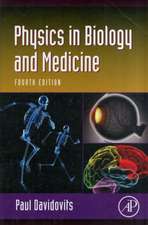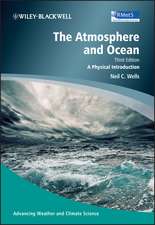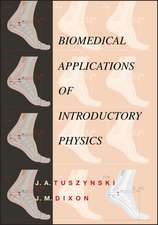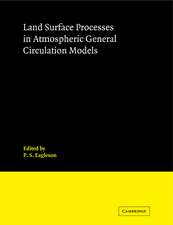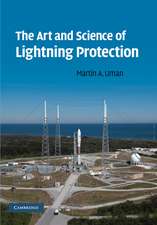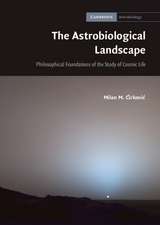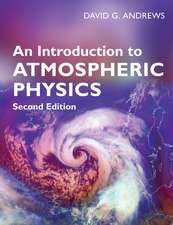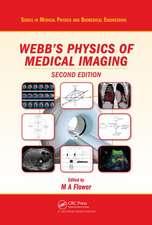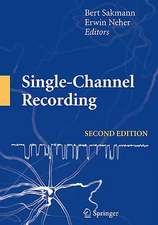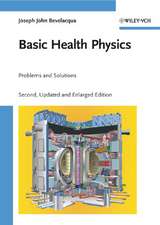Superconductor Materials Science: Metallurgy, Fabrication, and Applications: NATO Science Series B:, cartea 68
Autor Simon Foner, Brian B. Schwartzen Limba Engleză Paperback – 27 mai 2012
Din seria NATO Science Series B:
- 5%
 Preț: 375.70 lei
Preț: 375.70 lei - 5%
 Preț: 369.29 lei
Preț: 369.29 lei - 5%
 Preț: 720.84 lei
Preț: 720.84 lei - 18%
 Preț: 1406.03 lei
Preț: 1406.03 lei - 5%
 Preț: 373.33 lei
Preț: 373.33 lei - 5%
 Preț: 723.78 lei
Preț: 723.78 lei -
 Preț: 391.79 lei
Preț: 391.79 lei - 5%
 Preț: 1445.00 lei
Preț: 1445.00 lei - 5%
 Preț: 380.61 lei
Preț: 380.61 lei - 5%
 Preț: 1103.75 lei
Preț: 1103.75 lei - 5%
 Preț: 711.72 lei
Preț: 711.72 lei - 5%
 Preț: 1414.08 lei
Preț: 1414.08 lei - 18%
 Preț: 957.44 lei
Preț: 957.44 lei - 5%
 Preț: 723.21 lei
Preț: 723.21 lei - 5%
 Preț: 727.44 lei
Preț: 727.44 lei - 5%
 Preț: 1117.46 lei
Preț: 1117.46 lei - 5%
 Preț: 1429.80 lei
Preț: 1429.80 lei - 5%
 Preț: 366.56 lei
Preț: 366.56 lei - 5%
 Preț: 1116.21 lei
Preț: 1116.21 lei - 5%
 Preț: 1106.33 lei
Preț: 1106.33 lei - 5%
 Preț: 1107.77 lei
Preț: 1107.77 lei - 5%
 Preț: 1098.48 lei
Preț: 1098.48 lei - 5%
 Preț: 715.71 lei
Preț: 715.71 lei - 5%
 Preț: 1428.71 lei
Preț: 1428.71 lei - 5%
 Preț: 2004.54 lei
Preț: 2004.54 lei - 5%
 Preț: 724.70 lei
Preț: 724.70 lei - 5%
 Preț: 1438.38 lei
Preț: 1438.38 lei - 5%
 Preț: 1109.23 lei
Preț: 1109.23 lei - 5%
 Preț: 1414.64 lei
Preț: 1414.64 lei - 5%
 Preț: 1291.01 lei
Preț: 1291.01 lei - 5%
 Preț: 1029.50 lei
Preț: 1029.50 lei - 5%
 Preț: 388.12 lei
Preț: 388.12 lei - 5%
 Preț: 1104.48 lei
Preț: 1104.48 lei -
 Preț: 383.93 lei
Preț: 383.93 lei - 5%
 Preț: 718.46 lei
Preț: 718.46 lei - 5%
 Preț: 1113.63 lei
Preț: 1113.63 lei - 5%
 Preț: 369.45 lei
Preț: 369.45 lei - 5%
 Preț: 1108.72 lei
Preț: 1108.72 lei - 5%
 Preț: 1107.77 lei
Preț: 1107.77 lei - 5%
 Preț: 1297.99 lei
Preț: 1297.99 lei - 5%
 Preț: 1123.87 lei
Preț: 1123.87 lei - 5%
 Preț: 718.65 lei
Preț: 718.65 lei - 5%
 Preț: 1954.62 lei
Preț: 1954.62 lei - 5%
 Preț: 721.40 lei
Preț: 721.40 lei
Preț: 686.69 lei
Preț vechi: 807.87 lei
-15% Nou
Puncte Express: 1030
Preț estimativ în valută:
131.40€ • 137.54$ • 109.36£
131.40€ • 137.54$ • 109.36£
Carte tipărită la comandă
Livrare economică 31 martie-14 aprilie
Preluare comenzi: 021 569.72.76
Specificații
ISBN-13: 9781475700398
ISBN-10: 1475700393
Pagini: 1004
Ilustrații: XXIX, 969 p. 277 illus.
Dimensiuni: 178 x 254 x 53 mm
Greutate: 1.7 kg
Ediția:Softcover reprint of the original 1st ed. 1981
Editura: Springer Us
Colecția Springer
Seria NATO Science Series B:
Locul publicării:New York, NY, United States
ISBN-10: 1475700393
Pagini: 1004
Ilustrații: XXIX, 969 p. 277 illus.
Dimensiuni: 178 x 254 x 53 mm
Greutate: 1.7 kg
Ediția:Softcover reprint of the original 1st ed. 1981
Editura: Springer Us
Colecția Springer
Seria NATO Science Series B:
Locul publicării:New York, NY, United States
Public țintă
ResearchCuprins
1 Overview of Superconducting Materials Development.- I. Introduction.- II. Superconducting Materials of the First Kind.- A. Discovery.- B. Magnetic Properties.- C. Flux Penetration.- D. Nature of the Superconducting Transition.- 1. Bulk phase transition.- 2. Thin film phase transition.- E. The Two Fluid Model.- F. The Microscopic Theory.- III. Superconducting Alloys and Compounds, Early Work.- A. Introduction.- B. Critical Temperature Behavior.- C. Magnetic Field Behavior.- IV. Raising Tc With New Materials.- A. Introduction.- B. Transition Metal Alloys.- C. Carbides and Nitrides.- D. A15 Compounds.- 1. Progress in raising Tc.- 2. Present Tc situation.- 3. Factors depressing Tc.- 4. Other features of A15 behavior.- V. Superconductors of the Second Kind.- A. Introduction.- B. Another Kind of Superconductor.- C. Type II Materials.- VI. Unusual Materials and Future Possibilities.- A. Introduction.- B. Intercalation Compounds.- C. Organic Superconductors.- D. Low Carrier Density Superconductors.- E. Magnetic Superconductors.- F. Future Possibilities.- 2 Practical Superconducting Materials.- I. Introduction.- A. Practical Applications of Superconducting Materials.- B. Superconducting Materials in Common Use.- C. Problems in the Utilization of Superconducting Materials.- II. Stability: the General Problem.- A. Degradation and Training.- B. The Disturbance Spectrum.- C. Mechanical Sources of Disturbance.- D. Distributed Disturbances.- E. Point Disturbances.- F. Composite Conductors.- III. Flux Jumping.- A. General.- B. Screening Currents and the Critical State Model.- C. Adiabatic Theory of Flux Jumping.- D. Filamentary Composites.- E. Dynamic Stability.- F. Dynamic Stability with Finite Superconductor Thickness.- IV. C0ryogenic Stabilization.- A. Size Effects.- B. Principlesof Cryogenic Stabilization.- C. Boiling Heat Transfer.- D. Resistivity of the Normal Metal.- E. Heat Conduction Effects.- F. Effect of Finite Superconductor Size.- G. Forced Flow Cooling.- H. Superfluid Helium.- I. Cryogenic Stabilization in Practice.- V. AC Losses.- A. The Fundamental Loss Mechanism.- B. Hysteresis Loss.- C. Hysteresis Loss with Transport Current.- D. Filamentary Composites.- E. Self-Field Losses in Filamentary Composites.- F. Longitudinal Field Effects.- G. Combined Losses.- VI. Quenching and Protection.- A. The General Problem.- B. Temperature Rise.- C. Voltage.- D. Self-Protecting Magnets.- E. Other Protection Techniques.- VII. Measurement Techniques.- A. General.- B. Measurement of Critical Transport Current.- C. Measurement of Magnetization.- D. Measurement at Different Temperatures.- 3 Niobium-Titanium Superconducting Materials.- I. Introduction.- II. Metallurgical and Structural Properties.- A. Phases of the Niobium-Titanium System.- B. Cold-Worked Microstructures.- C. Elastic and Plastic Mechanical Behavior.- D. Metallurgical Properties of Related Systems.- III. Physical Properties.- IV. Superconducting Properties.- A. Basic Properties.- 1. Transition temperature and upper critical field.- 2. Paramagnetic limitation and spin-orbit scattering.- 3. Nb-Ti base ternary and quaternary systems.- B. The Superconducting Critical Current Density.- 1. Measurement techniques.- 2. Critical current densities.- V. Industrial and Fabrication Considerations.- VI. Future Developments and New Directions.- A. Conventional Composites.- B. Unconventional Developments.- 4 Metallurgy of Continuous Filamentary A15 Superconductors.- I. Introduction.- II. History of the “Bronze Process”.- A. Early History.- B. Evolution of the Process.- 1. The Ta diffusionbarrier.- 2. The external diffusion process.- 3. The internal tin diffusion process.- 4. Bronze in Nb tubing.- 5. WRAP process.- 6. Other modifications.- III. Metallurgical Principles.- A. Thermodynamic Considerations.- B. Kinetics.- 1. Growth mechanisms.- 2. Experimental results.- IV. Influence of Metallurgical factors on Superconducting Properties.- A. Strains in Composite Superconductors and Their Influence on the Superconducting Properties.- B. Critical Temperatures.- 1. Effects of heat treatments.- 2. Effects of additives.- C. Critical-Current Densities and Magnetic Fields.- 1. Flux pinning (the scaling law).- 2. Temperature dependence.- 3. Grain size dependence.- 4. Effects of heat treatments and alloying.- 5. What is required for high Jc?.- V. Future Directions.- 5 Fabrication Technology of Superconducting Material.- I. Introduction.- II. Technology OF Solid Solution Superconductors.- A. Basic Properties of NbTi Alloys.- B. The influence of thermal treatment in the region of 873 K.- C. Mechanical Properties of NbTi Alloys.- D. Stress-Strain Behavior at Elevated Temperatures.- E. Raw Materials and Melting of NbTi.- F. Melting NbTi Alloys.- G. Sources of Inhomogeneities and Imperfections in the Molten Ingots.- H. Conductors and Fabrication Parameters.- I. Extrusion Technology.- 1. Extrusion billets and sealing techniques for single and multiextrusion.- 2. Extrusion presses and extrusion parameters.- 3. Extrusion temperature and preheating.- 4. Extrusion ram speed.- 5. Conductors containing mixed substrate.- J. Drawing Machinery, Twisting and Current Optimization.- K. Current Density Optimization and Properties of Monolithic Filamentary Conductors.- L. The Anisotropy of Rectangularly~Shaped Conductors.- M. Occurrence of the Ti Cu-Phase.- III. A15 Solid Solution Conductors.- A. Basic Properties of Nb3Sn and V Ga.- B. Principles of Solid State Diffusion.- C. Fabrication of the Conductors and Technology of High Sn-Content Bronzes.- D. Conductor Optimization with Respect to Layer Growth, Recrystalization, Kirkendall Effect,Filament Diameter and Filament Distribution.- E. Influence of Mechanical Strain on Electrical Properties.- F. Remarks About the Measurement of Critical Current Density of Technical Conductors.- G. Stabilization and Examples of Technical Conductors.- IV. Conductor Assembly By Braiding, Cabling, Mechanical Strengthening and Adding Stabilizers.- A. Technical Production of Flattened Cables and Braids.- B. Hollow Conductors and Fabrication Principles.- C. Fabrication of High Current, High Strength Hollow Conductors.- 1. Strands.- 2. Cr-Ni core with Kapton insulation.- 3. Cabling and Soldering.- 4. Strip for the conduit.- 5. Conductor completion.- V. Future Directions.- A. Solid Solution Superconductors.- B. A15 Superconductors.- 6 Alternative Fabrication Technologies for A15 Multifilamentary Superconductors.- I. Introduction.- II. Conventional Process Mechanical Assembly.- A. Historical Note.- B. Nb3Sn Technology.- C. Status.- D. Need for Alternate Technologies.- III. IN SITU Solidification.- A. Introduction.- B. The Natural Dispersion of the Superconductor.- 1. Phase diagram, solidification process.- 2. Melting and casting techniques.- C. Transformation into a Filamentary Superconductor.- 1. Mechanical deformation.- 2. Tin addition.- 3. Diffusion and reaction heat-treatment.- D. Superconducting Properties.- 1. Overall Jc of Cu-Nb.- 2. Overall Jc of Cu-Sn wires.- 3. Overall Jc of Cu-Nb-Sn versus Nb concentration.- 4. Overall Jc of Cu-V-Ga.- E. Mechanical Properties.- 1. Mechanical properties of Cu-Nb-Sn.- 2. Pre-stressmodel.- 3. Mechanical properties of Cu-V-Ga.- F. Experimental Observations on Connectivity.- 1. Random distribution.- 2. Filament geometry.- 3. Acid test.- 4. Unified perculation-proximity.- G. Research in Progress.- H. Scale-up Technologies.- IV. Powder Metallurgy.- A. Introduction.- B. Cold Process.- 1. Experimental technique.- 2. Materials selection.- 3. Results.- 4. Potential.- 5. Research in progress.- C. Hot Process.- 1. Experimental technique.- 2. Results.- 3. Potential.- D. Infiltration Process.- 1. Experimental technique.- 2. Results.- 3. Features.- 4. Scale-up technology.- V. Other Processes.- A. Metastable Solid Solution (Stoichiometric).- B. Controlled Precipitation.- C. Mechanical Alloying.- D. Modified Jelly Roll.- E. Energy Research Foundation (ECN) Process.- VI. Concluding Commentaries Future Developments.- 7 Mechanical Properties and StrainEffects in Superconductors.- I. Introduction.- A. Sources of Mechanical Loads in Magnets.- 1. During fabrication.- 2. Differential thermal contraction.- 3. The Lorentz force.- B. Mechanical Properties of Superconductors.- II. Stress-Strain Characteristics.- A. Micromechanical Model.- B. Stress-Strain Characteristics for Practical Conductors.- III. Effect of Uniaxial Strain on JC, Hc2, and Tc.- A. Mechanical-Electrical Interaction.- B. Jc-? Characteristics for Practical Superconductors.- 1. Multifilamentary NbTi.- 2. Multifilamentary Nb3Sn.- 3. Multifilamentary V3Ga.- 4. CVD Nb3Ge tape.- C. Strain Scaling Law — Prediction of JC (B,?).- 1. Scaling of pinning force curves.- 2. Strain scaling law.- 3. Application to practical multifilamenttary Nb3Sn conductors.- D. General Scaling Law — Prediction of J (T, B, ?).- E. Uniaxial-Strain Criterion for Magnet Design.- IV. Bending Strain.- A. Effect of Bending on Jc.- B.Prediction of Bending-Strain Degradation from Uniaxial-Strain Measurements.- 1. Long twist pitch.- 2. Short twist pitch.- 3. Application.- C. Bending Strain Limits for Magnet Design.- D. Methods for Minimizing Bending Degradation.- 1. Cabling.- 2. Wind-and-react magnet fabrication.- V. Fatigue.- A. Matrix Degradation.- 1. NbT.- 2. Nb3 Sn.- B. Micromechanical Model.- VI.Training.- A. Stress-Relief Model.- B. Materials.- C. Techniques for Minimizing Training.- 1. Crack arrestors.- 2. Bond breakage and friction.- 3. Programmed winding tension.- 4. Magnet shakedown without quenching.- VII. Summary and Future Research Needs.- A. Summary of Material Strain Limits for Magnet Design.- B. Future Research Areas.- 8 Phase Diagrams of Superconducting Materials.- I. Introduction.- II. Experimental Determination of High Temperature Phase Diagrams.- A. Sample Preparation.- 1. Arc melting.- 2. r.f. melting in water-cooled Crucibles.- 3. r.f. melting in graphite or ceramic crucibles.- 4. Levitation melting.- 5. Other melting techniques.- B. Homogenization Heat Treatments.- C. Direct Observation Methods.- 1. Differential thermal analysis (DTA).- 2. Thermal analysis on levitating samples (LTA).- 3. Electrical resistivity at high temperatures.- D. Indirect Observation Methods.- 1. Simultaneous stepwise heating.- 2. Splat cooling of liquid samples.- 3. Argon jet quenching on solid samples.- 4. Superconducting “memory”.- III. Determination of Phase Diagrams Below 300 K.- A. Factors Influencing the Superconducting Data.- 1. Ordering effects.- 2. Shielding effects.- B. Low Temperature Specific Heat.- 1. Calorimetric detection of shielding effects.- 2. Shielding in multifilamentary Cu-Nb3Sn wires.- 3. Calorimetric observation of low temperature phase transitions.- C. Electrical ResistivityBelow 300 K.- IV. Criteria for Phase Stability and Superconductivity.- A. The Brewer Plots.- 1. Does Au behave like a transition element?.- 2. The relative stability of intermetallic phases.- 3. The A15 phase.- B. Criteria for Superconductivity.- V. Phase Fields and Superconductivity in Binary “Electron Compounds”.- A. The hep Structure (A3 type).- B. The A2 Compounds.- C. “Atypical” A15 Compounds.- 1. The V-(Re, Os, Ir, Pt, Au) system.- 2. The electronic structure of electron compounds: the two-band model.- 3. The Nb-(Os, Ir, Pt, Au) system.- 4. The Cr-(Os, Re, Pt) system.- 5. The Mo-(Re, Os, Ir, Pt) system.- 6. The Ti-system.- 7. Characterization of “atypical” A15 compounds.- VI. Phase Fields and Superconductivity in Binary and Pseudobinary “TYPICAL” A15 COMPOUNDS.- A. The V~x3Au and Nb~3Au systems.- B. The Systems V3B (B = Ga, Si, Ge, “Al”, and Sn).- 1. V3Ga.- 2. V3Si and the martensitic transformation.- 3. V3Ge.- 4. “V3AI”.- 5. V3Sn.- C. V.-Based Pseudobinary Compounds.- 1. V3 (AU1-xPt3).- 2. V0.75(Ga1-xSix).- D. Nb3B (B = Ge, Ga, A1, Sn, and Sb).- 1. Nb-Ge.- 2. Nb-Ga.- 3. Nb-Al.- 4. Nb3Sn.- 5. Nb3Sb.- E. Nb-Based Pseudobinary Compounds.- 1. Nb3 CAu1-x Ptx).- 2. Nb3Cal1-x bx) (B = Ge, Si, Ga, Be, B, As,…).- F. Mo-Based Binaries and Ternaries.- 1. Mo3Ge and Mo3Si.- 2. Mo3(Ge1-xSix).- G. General Correlations for A15 Compounds.- 1. The superconducting transition temperature.- 2. Electronic specific heat.- 3. Type of formation of A15 compounds.- 4. Variation of the lattice parameter in Nb-based A15-type compounds.- VII. Phase Fields and Superconductivity Rhombohedral Mo Chalcogenides (Chevrel Phases)A. Binary Mo-S System.- A. Binary Mo-System.- B. CuxMo6S8 System.- C. PbxMo6S8 System.- D. Mo6Se8, CYuXMo6Se8, Pbx Mo6Se8.- E. GeneralCorrelationsfor Rhombohedral Compounds.- F. Comparison with the A15 Compounds.- 9 Josephson Junction Electronics: Materials Issues and Fabrication Techniques.- I. Introduction.- II. Device Principles and Materials Requirements.- A. Josephson Junctions: Tunnel Junctions and Weak-Link Devices.- 1. Tunnel junctions.- 2. Weak-link microbridge Josephson junctions.- B. Other Circuit Elements.- C. Summary of Superconducting Device and Material Parameters of Importance.- III. Integrated Circuit Fabrication.- A. Junctions with Pb-alloy Electrodes.- 1. Integrated circuit fabrication.- 2. Pb-alloy electrode materials.- 3. Tunnel barrier.- B. Junctions with Niobium Electrodes.- C. Comparing Junctions with Nb and Pb-Alloy Electrodes.- IV. Stability of Films and Devices During Cycling Between 350 K And 4.2 K.- A. Origin of the Cycling Problem.- B. Strain Relaxation Mechanisms.- C. Film and Device Stability.- D. Choosing a Material for Mechanical Stability.- V. Electron Tunneling and Tunnel Barrier Formation.- A. Theory of Tunneling: Ideal Cases of Interest.- B. Complications that can Occur in Practical Tunnel Junctions.- C. Tunnel Barrier Formation.- 1. Crown-oxide barriers.- 2. Deposited barriers.- VI. Advanced Materials and Devices.- A. Materials of Interest.- B. Thin-Film Deposition Techniques and Film Properties.- C. Advanced Tunneling Devices.- 1. Small Tunnel junctions.- 2. Intermetallic compounds.- 3. Transition metal alloys.- D. Artificial (Deposited) Barriers.- E. Weak-Link Microbridges.- 10 Chevrel Phase High Field Superconductors.- I. Introduction.- II. Chemistry and Structure.- A. Preparation.- B. Chemistry.- C. Structure.- III. Physical Properties.- A. Superconducting Temperatures.- 1. Lattice properties, phonons.- 2. Electronic properties, charge transfer.- B. Upper Critical Fields.- C. Magnetism, Coexistence of Magnetism and Superconductivity.- D. Critical Currents and Applications.- IV. New Materials Proceeding from the Linear Condensation of the Octahedral Mo6 and Clusters.- A. In~3Mo15Se19 Containing Mo6 and Mo9 clusters.- B. M2Mo15Se(M = K, Ba, In, Tl) and (M2Mo15S19 (M = K Rb, Cs) containing Mo6 and Mo9 clusters.- C. M2Mo9S11(M = K, Tl).- D. M2Mo6X6 M2 Mo6S6 (M = K, Rb, Cs), M2Mo6 Se6 (M = In, Tl, Na, K), M2Mo6Te6 (M = In, Tl, Na, K) with one-aimensional clusters (Mo6/2)?.- V. Conclusion.- 11 Superconducting Proximity Effect for in Situ and Model Layered Systems.- I. Model Systems.- II. Boundary Conditions At the Superconducting- Normal Interface.- A. Electron Tunneling.- B. Thermal Conductivity.- III. Phonon Spectral Function, ?2F(?).- IV. Supercurrents Through Normal Barriers.- A. Thickness Dependence.- B. Temperature Dependence.- C. Magnetic Field Dependence.- V. Flux Entry Fields.- VI. Implications for in Situ Composites.- 12 Amorphous Superconductors.- I. Introduction.- A. Preparation Techniques.- B. Structural Properties.- C. The Anderson Theorem.- II. Systematics of TC.- A. Non-transition Metals.- B. Transition Metals.- III. Electron-Phonon Interaction.- A. The Ratio of Energy Gap to Transition Temperature (2?(0)/KB TC).- B. a2F(?) and ?.- C. Origins o£ Strong Electron-Photon Inter action.- 1. Amorphous non-TM superconductors.- 2. AIS superconductors.- IV. Critical Fields.- A. The Upper and Lower Critical Fields.- B. The Temperature Coefficient of Critical Fields.- V. Potential Applications.- A. High Field Magnets.- B. Josephson Junctions.- 13 Reviews of Large Superconducting Machines.- I. Introduction.- II. Technical Superconductors.- III. Superconducting Magnets for High Energy Physics.- IV. Levitated Trains-Electrodynamic Levitation System.- V. Superconducting Coils for Magnetic Separation.- VI. Rotating Machinery with Superconducting Windings.- A. Generators.- B. DC Machines.- VII. Superconducting High Power Cables.- VIII. Superconducting Switches.- IX. Magnet Systems for Fusion Reactors.- X. Superconducting Magnets For MHD Plants.- XI. Superconducting Magnet Energy Storage (SME Storage).- 14 Superconductivity in Canada.- 15 Research Activities in Superconductivity in China.- I. Introduction.- II. Background.- III. Superconducting Materials.- A. NbTi.- B. Nb3Sn.- C. V3Ga.- D. New Materials.- IV. Superconducting Magnet Systems.- A. Laboratory Magnets.- B. High Energy Physics.- C. Controlled Thermonuclear Reaction Technology.- D. Superconducting Machines.- E. Magnetic.- F. Other Applications.- V. Josephson Junction Devices.- A. Voltage Standard.- B. Magnetometer.- C. High Frequency Devices.- 16 European Efforts on Superconducting Materials.- 17 Review of National Efforts in Middle Europe.- I. Introduction.- II. Austria and Switzerland.- A. Members in Switzerland.- B. Expenditures Within COST-action 56 in Switzerland.- 1. First phase of the COST-action 56 (1977-1979).- 2. Second phase of the COST-action 56 (1980-1982).- C. Projects in Switzerland.- D. Members in Austria.- E. Funding Level in Austria.- F. Projects in Austria.- III. Czechoslovakia.- IV. GDR (German Democratic Republic).- V. Hungary.- VI. Poland.- 18 Recent Developments in High-Field Superconductors in Japan.- I. Introduction.- II. The Development of V3Ga.- A. Surface Diffusion Process.- B. Composite Diffusion Process.- III. Improvements in High-Field Current-Carrying Capacities of Composite-Processed A15 Superconductors.- IV. Superconducting and Mechanical Properties of the in Situ Processed V3Ga.- V. Developments in the V2Hf-Base C-15 Type Superconductors.- VI. Developments of Multifilamentary A15 Conductors in Japanese Research Groups other than Nrim.- 19 Programs on Superconducting Materials and Miniature Cryocoolers in the United States.- I. Summary.- II. Introduction.- III. Superconducting Materials.- A. Bulk Materials.- 1. Liquid Solute Diffusion (LSD).- 2. Chemical Vapor Deposition (CVD).- 3. Electron Beam Deposition (EBD).- 4. Solid State Diffusion (SSD).- B. Thin Films.- IV. Small Cryocoolers.- V. Trends.- A. Bulk Superconducting Materials.- B. Thin-Film Superconducting Materials.- C. Small Cryocoolers.- 20 Large-Scale Applications of Superconductivity in the United States: An Overview.- I. Introduction.- II. Low Field Regime (H < 2T).- A. General Remarks.- B. Power Transmission Lines.- 1. General Remarks.- 2. Superconducting AC power transmission lines (SPTL).- 3. Superconducting DC power transmission lines.- C. RF Cavities for Particle Accelerators.- III. Intermediate Field Regime (2 < H < 5T).- A. General Remarks.- B. Magnets for High Energy Physics (HEP).- C. Rotating Electrical Machines.- 1. DC acyclic (homopolar) motors.- 2. AC machines (generators).- D. Energy Storage Magnets.- IV. High Field Regime (H >2T).- A. General Remarks.- B. Magnetohydrodynamics (MHD).- C. Magnetically Confined Fusion.- V. Superconducting Materials.- VI. Helium Conservation.- VII. Miscellaneous Applications.- A. Electromagnetic Launchers.- B. Magnetic Separation.- 21 Reports on Some Superconducting Materials Companies in The United States.- I. Airco, Inc., Carteret, New Jersey 07008.- A. Introduction.- B. Materials Fabrication.- II. Intermagnetics General Corporation, Waterbury, Connecticut and Guilderland, New York.- A. Introduction.- B. Manufactured Materials.- 1. Ductile alloy superconductors.- 2. A15 superconductors.- 3. External bronze process.- C. Conclusions.- III. Supercon, Inc.- A. Introduction.- B. High Field Superconductors.- IV. Teledyne WAH Chang Co., Albany, Oregon 97321.- A. Introduction.- B. Material Supply and Manufacturing.

